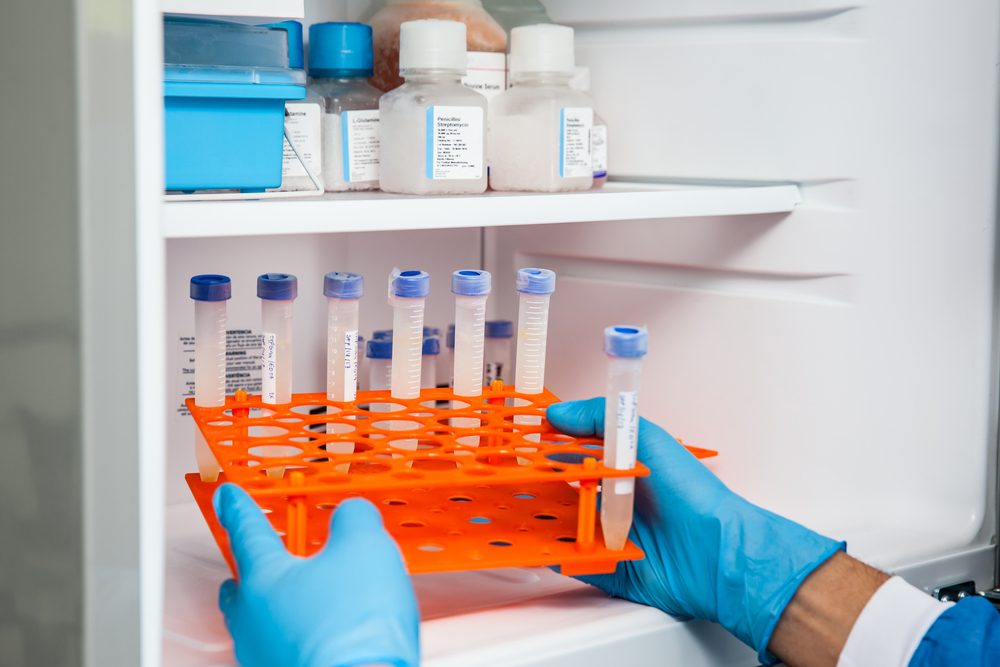Laboratory refrigerators are meant for long-term, reliable storage of temperature-sensitive samples. Just like any lab equipment, failing to follow proper maintenance practices could lead to malfunctioning or failure.
To maximize the efficiency of lab refrigerators, the devices have to operate properly using the correct maintenance practices. So, how do you keep your unit clean, improve its efficiency, and extend the lifespan? In this post, we’ll explore seven preventative maintenance tips for your lab’s refrigerator.
1. Pay attention to the alarms
Lab refrigerators feature alarms indicating low or high temperature, extensive door opening and power failure. While it’s possible to deactivate these alerts, you shouldn’t ignore them. Instead, you should check it regularly within the maintenance and cleaning schedule. Also, you should label the different refrigerators clearly with all the necessary points of contact.
2. Store all materials appropriately
Your lab refrigerator can perform best if the airflow within it remains unobstructed. Racking systems ensure optimal use of the available storage space. Also, they help guarantee the correct flow of air. Furthermore, these systems make it even easier to locate samples, and you can stack containers and boxes neatly. As a result, you’ll minimize the time the refrigerator door remains open.
You should also avoid storing materials on top of your lab fridge, especially if it is a top venting unit. This could trap warm air within, forcing the compressor to work more frequently to maintain the proper storage temperature. By avoiding this, you could cut energy costs and increase the compressor’s lifetime.
3. Keep the door gaskets clean
Usually, the gasket’s purpose is to create a tight seal throughout the edges of the fridge door. It prevents cold air from escaping the chambers and warm air from entering. Ultra-low temperature (ULT) freezers feature outer door gaskets as a standard. However, your unit may also have the same feature for the inner doors. This helps maintain uniform temperatures within the unit’s internal components.
You need to check all door gaskets for leaks, and you can easily spot these by accumulations of ice at the weak points. Furthermore, you should wipe them down using a soft cloth to get rid of any dirt or dust that may compromise their performance. This way, you can easily avoid the effects of a faulty gasket.
4. Remove ice or frost build-up regularly
As you open the door to remove or keep material, it may result in a build-up of ice or frost. As a result, this may limit the outer door from moving efficiently, and it may not seal properly. Therefore, we recommend that you inspect the gaskets and door seals for an accumulation of frost on a regular basis.
To minimize ice build-up, always try to get your samples in and out of the device as quickly as you can. Furthermore, you can scrape the ice from the door seals regularly and ensure there’s no ice build-up on the inner doors. In case you have to clear out old stocks and materials within the unit, you can use this chance to defrost the entire equipment. But always remember not to use the ice pick when defrosting.
5. Taking care of the coils
Another crucial maintenance practice is vacuuming the condenser coils located on the outer parts. But how does one determine the appropriate time to do this? The best time is probably now. The coils have to be kept clean at all times, free from dust, or any other material that may hinder the heat exchange.
In terms of refrigeration, one thing you need to do is keep the coil clean to ensure that your cooling unit works as designed. Grime and dust-prone coils could lead to higher energy costs and a lower life span for the unit. Therefore, an additional effort to clean them could go a long way for your lab.
6. Clean as you go
Cleaning could also prolong the lifespan of your lab fridge. As you work from one shelf to another, inventorying and trashing the useless item, ensure that you keep a cleaning cloth or towel handy to wipe all the shelves down. Also, do the same for the refrigerator racks and walls.
Most preferably, dampen the cloth with warm water to remove crumbs and wipe down spills from the walls and shelves. Also, an all-purpose cleaner could make things easier and take on sticky spills and stains without much effort.
7. Lengthen the life of your unit
If reading this piece leaves you feeling like you have not been doing much in terms of caring for the refrigerator in your lab, then do not fret. All you have to do now is establish a maintenance strategy incorporating upkeep, space management, and sample management. Alternatively, you can hire a service provider if you lack sufficient time for all these maintenance practices. This way, you can be sure that the devices are properly maintained and will remain functional for longer.
Laboratory refrigerators contain costly reagents, irreplaceable samples, and several months or years of research. Therefore, you should treat them with deserved respect and perform simple preventative maintenance practices. This way, you can be sure that these crucial pieces of lab equipment will serve you reliably for years.
Conclusion – Cryostar Industries
Maintaining your lab’s refrigerator is incredibly important. This is especially true if your lab consistently relies on your fridge’s performance. At Cryostar Industries, maintaining, repairing and troubleshooting lab refrigerators and freezers is among our many service specialties. Our expert technicians are trained and certified to service the widest variety of manufacturers. And we effectively guarantee a swift, efficient and reliable repair.

| Call for Immediate Lab Services |
|---|
| Long Island, Nassau & Suffolk County Call: 516-333-4006 |
| The Bronx, Manhattan, Brooklyn, Queens, & Staten Island Call: 718-885-0833 |
| Albany & Southern New York State Call: 800-564-5513 |
| Piscataway, Northern & Central New Jersey Call: 800-564-5513 |
| Danbury Connecticut & Surrounding Areas Call: 203-748-7343 |
24/7 Emergency ServiceCall: 1-800-564-5513 |